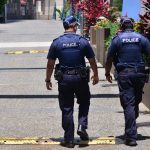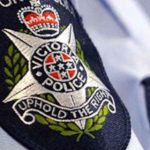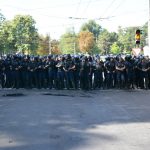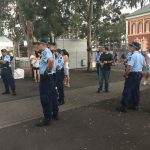NSW Police Adopt US-Style ‘Confront and Neutralise’ Policy
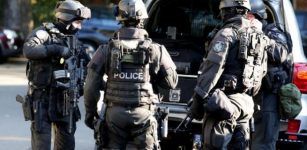
Around 8,000 NSW police officers have undergone special training in what the police commissioner describes as a response to “a new kind of normal”.
Active Armed Offender Training began in 2015, and is designed to re-train officers in dealing with situations where it is believed an armed suspect poses an imminent threat to the public.
Until recently, it was the practice of police to create a perimeter and attempt to resolve situations by negotiating with suspects from an external vantage point.
The perceived problem with that approach was that some suspects would continue to pose a threat, or only stop after turning on themselves or being shot dead by law enforcement officers.
The 8,000 officers who have undertaken the program represent around half of all police in NSW, with the other half expected to complete the course within the next 12 months.
‘Confront and neutralise’
Commander of the Investigations and Counter Terrorism Command, Deputy Commissioner David Hudson says the new training will better equip police to deal with dangerous situations.
It focuses on confronting suspects and ‘neutralising’ them, rather than defusing situations through negotiation.
The training is undertaken during a four-day intensive practical course, which is based on the FBI’s ALERRT program, an initiative devised in the wake of mass shootings in Texas.
More than 100,000 police officers in the US have already completed the program.
What’s good for the U.S., is good for us
“This program is based on world’s best practice, bringing the NSW Police Force’s operational capacity up to speed with lead combat agencies around the globe,” claims Police Minister Troy Grant.
However, the course is actually only considered ‘best practice’ in a country where mass shootings are commonplace. By contrast in Australia – and with the exception of the 1991 Strathfield massacre in which seven people were killed, and the Port Arthur massacre in 1996 during which 35 people were shot dead – we have not experienced these types of incidents with any regularity.
An article in the Washington Post earlier this year tallied up the deadliest mass shootings in America over the past 50 years. Over that time, there have been 129 such ‘events’ and 880 lives have been lost, of which 145 have been minors.
The concern for our state is that police officers will too readily declare an incident to be dangerous, confronting suspects and potentially making situations worse than they already are – even leading to avoidable injuries or loss of lives.
Gun control laws
Another significant difference between Australia and the US is our rigorous gun control regime.
In the wake of the 1991 Port Arthur Massacre, then Prime Minister John Howard implemented a controversial programme designed to make it more difficult for people to obtain a gun without an appropriate licence.
Despite those laws, figures released last year suggest that gun ownership is currently on the rise in New South Wales.
But should this be a cause for concern? Anti-gun lobbyists say yes, pointing to statistics which suggest a correlation between the numbers of guns in an area and violent crime. According to the analysis, which used fresh gun data and BOCSAR statistics, every additional 1,000 guns in a postcode corresponds to 12 more violent crimes in that area per year.
However, those in favour of gun ownership point to the fact that a whole range of factors could contribute to that correlation – including socio-economic disadvantage – and that it is misleading to suggest that more guns equates to more crime. They add that the vast majority of gun crimes in our country are committed using illegal or unregistered firearms, rendering the statistics virtually meaningless.
Whatever the case may be, there are legitimate concerns that the new ‘confront and neutralise’ policy could lead to unnecessary confrontations and avoidable escalations in violence.

